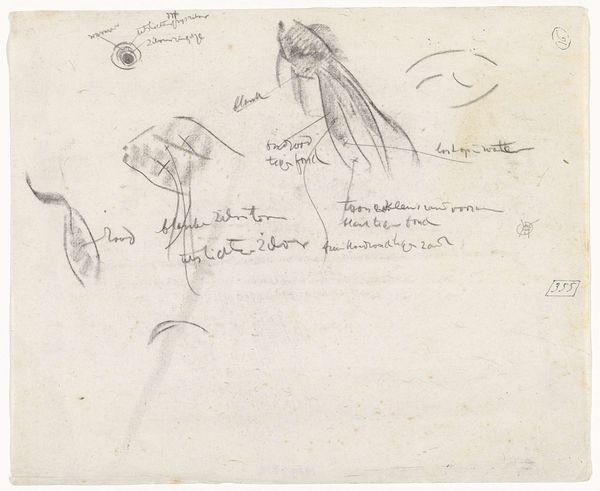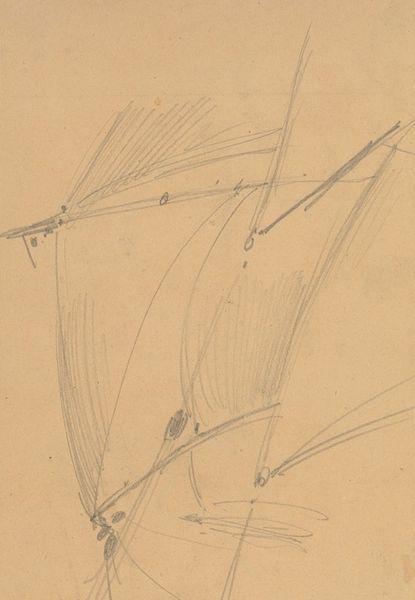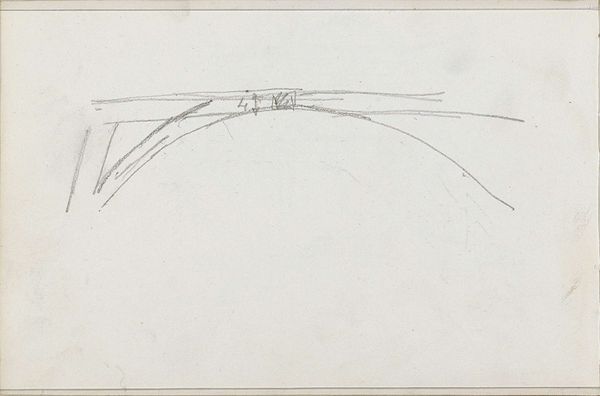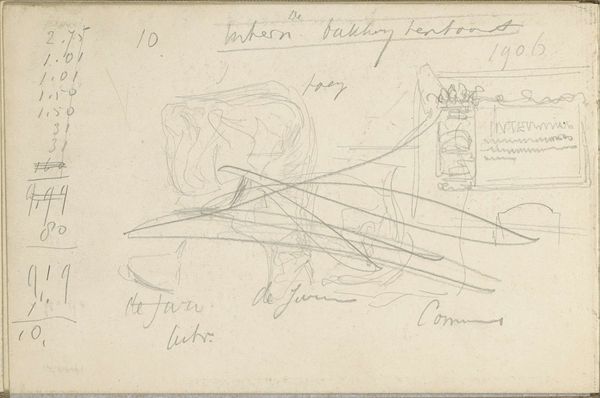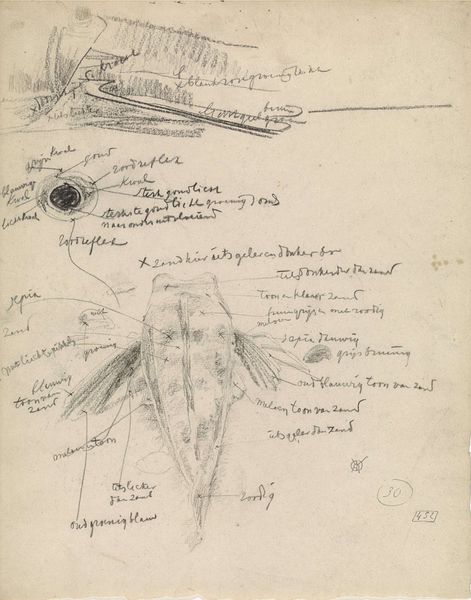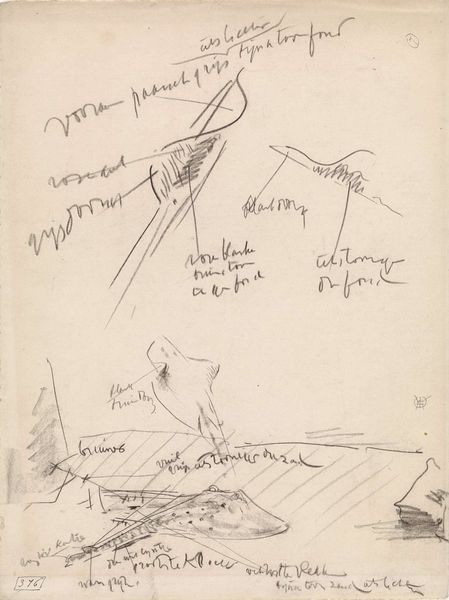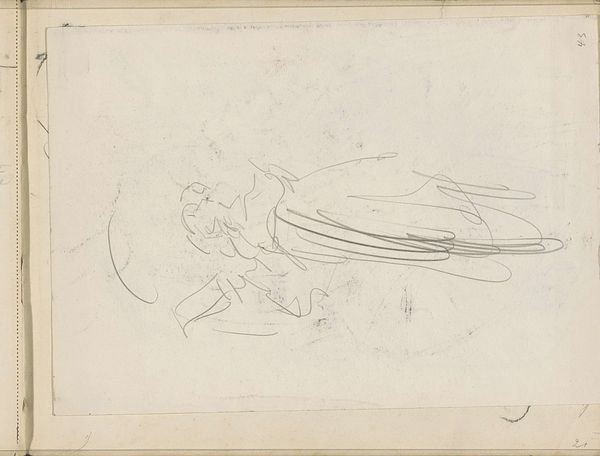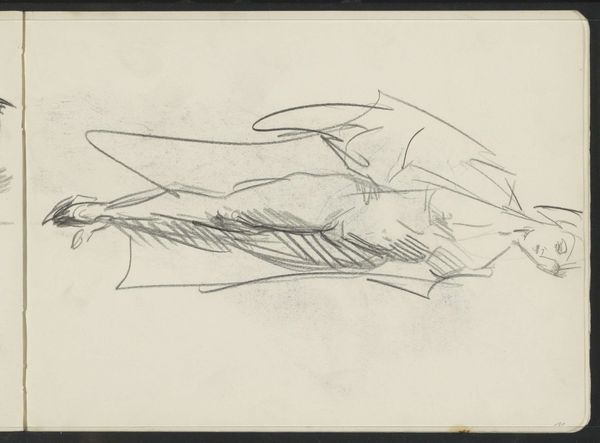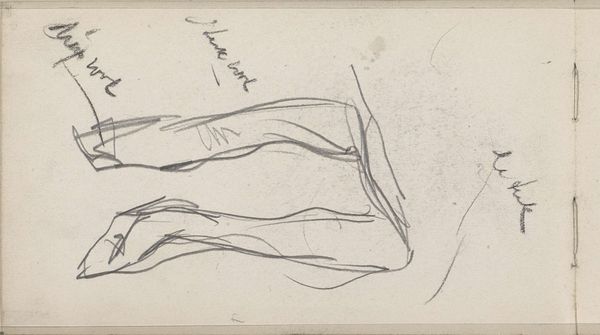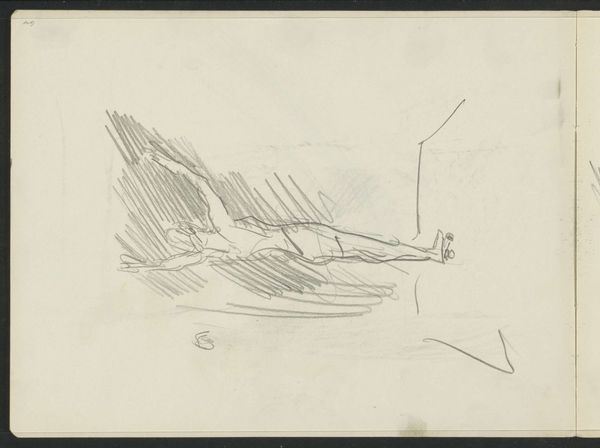
drawing, paper, pencil
#
portrait
#
drawing
#
comic strip sketch
#
hand drawn type
#
paper
#
personal sketchbook
#
idea generation sketch
#
sketchwork
#
pen-ink sketch
#
pencil
#
abstraction
#
pen work
#
sketchbook drawing
#
sketchbook art
#
modernism
#
initial sketch
Copyright: Rijks Museum: Open Domain
Curator: Here at the Rijksmuseum, we have a pencil drawing titled "Grote paradijsvogel," or "Greater Bird-of-Paradise" by Carel Adolph Lion Cachet, dated 1928. It’s a study, really, on paper, and showcases Cachet’s interest in depicting the natural world. Editor: My first impression is that it's very subdued and quite academic for a bird that is normally associated with exuberance and vibrant colour. There's also some quite dense handwritten text scrawled around the drawing which makes me curious to know more. Curator: Absolutely. It’s from the artist's sketchbook and shows a clear intersection between art and scientific inquiry. It's likely related to then-contemporary colonial interest in exotic wildlife and new classification methods in natural history. Editor: The handwritten notes, which look like taxonomical classifications, bring up some complex themes concerning colonialism, conservation, and questions surrounding the commodification of the natural world through art and science. Are we complicit in upholding those structures when we put works such as this on display? Curator: That’s a really salient point. Displaying it allows us to reflect on the complicated legacy of these naturalist studies and their links to empire. This work doesn't celebrate colonialism per se; it reflects the mindset and visual strategies of its time. And moreover, a quick initial drawing of this kind allows us to analyse a shift in visual culture within Modernism in the Netherlands, from realism towards more abstract or conceptual representation, rather than simple colonial ideology. Editor: That is so important: how art itself allows for colonial agendas to surface in its materiality and the hands of its makers. Curator: This simple pencil study actually holds within it larger cultural debates about our place in the natural world. It challenges the assumed objectivity of scientific representation through a more expressive, albeit unfinished, study. Editor: Definitely. I leave feeling more inquisitive than I expected; it highlights that even in studies like this, supposedly "neutral," that a world of ideologies are quietly at play.
Comments
No comments
Be the first to comment and join the conversation on the ultimate creative platform.
